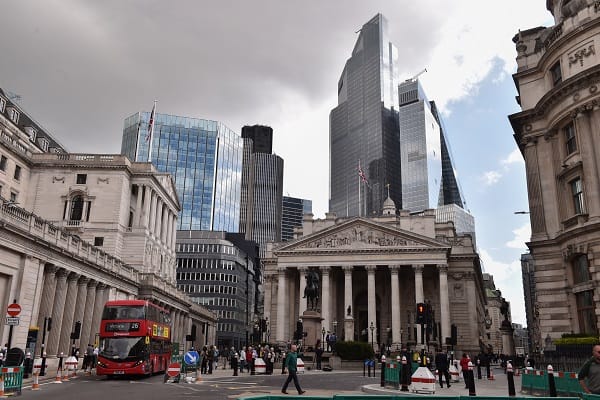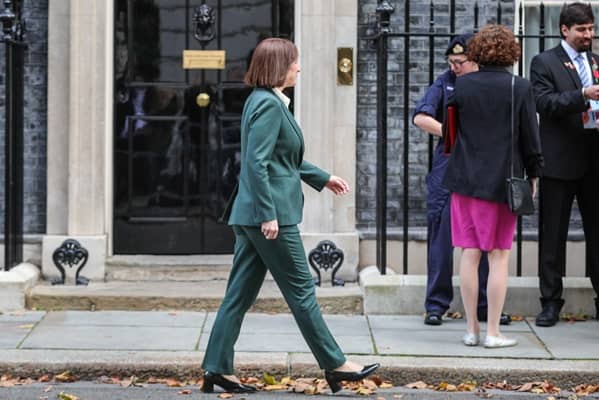Bussiness
The interest rate challenges facing the Bank of England

Inflation may be decelerating in the UK but the level of prices is far higher than only three years ago.
This helps explain why the cost-of-living crisis is still an issue for so many people. In March, the annual rate of inflation decelerated to 3.2% from 3.4% in February.
Yet consumer prices were 19.5% higher than in July 2021, which was the last month on which the 2% inflation target was hit.
Consumer prices in the UK were, in fact, in the first quarter of this year 21.2% higher than three years earlier in the first quarter of 2021.
Prices are 14.2% above where they would have been if the Bank of England had ensured that inflation had risen in line with the target of 2% over those three years. So, while it is good that inflation is decelerating, the inflation penalty over the last three years means prices are one-seventh higher than they need otherwise have been.
When Russia invaded Ukraine in February 2022 consumer price inflation was already more than three times greater than target, reaching 6.2%. Subsequently it peaked at 11.1% in October 2022.
The factors that triggered inflation have now been reversed: loose monetary policy and supply side shocks caused by the pandemic or the war. Second round inflation effects are now being monitored closely: wage increases and corporate pricing behaviour, as companies raised prices to maintain or even perhaps to boost margins. There is now scope for UK rates to fall. The questions are when and by how much. But even if rates fall it is important to stress that they still need to settle at high levels compared with pre-pandemic.
Nonetheless, the fact that UK rates may still fall comes at a time when sentiment towards US rates has turned more cautious. This is a positive backdrop for UK assets. UK equities are undervalued. That appeared to be the general response to news that the UK equity market had reached an all-time high earlier this week. It is a view we would concur with. Despite this, the near-term outlook for UK assets – and not just equities – is likely to be heavily driven by the developing debate about the outlook for the economy and the implications for policy, particularly interest rates.
Let’s note last week’s spring meetings of the IMF and World Bank in Washington. The centrepiece of these meetings were the latest economic forecasts from the IMF, which continue to point to a soft-landing for western economies and a disinflationary global environment. This is one in which inflation decelerates and then stays low, while economic growth in western economies is modest. It is a view we would share.
In terms of global growth, on the IMF’s measure, the world economy grew 3.5% in 2022 and 3.2% last year and is expected to grow at 3.2% this year and next. While they are slightly more optimistic about immediate prospects for global growth than during their last forecast in January, it is far from booming. Keeping its head above water may be an appropriate analogy. The IMF’s title for its spring economic outlook was, “Steady but Slow: Resilience amid Divergence”.
The IMF saw the UK growing 0.5% this year and 1.5% next. In my view, this year’s forecast is too low. It compares with 0.2% and 1.3% for Germany, 0.7% and 1.4% for France and 0.7% in both years for Italy. Meanwhile, the US is predicted to grow by 2.7% and 1.9% this year and next.
The IMF also draws attention – in a separate publication, the Fiscal Monitor – to the UK’s fiscal position. They were right to do so, although importantly the UK is one of a number of countries with fiscal challenges. I would say it is all the G7, bar Germany. As we have noted before, it is not just the current level of debt, but also the future relationship between growth and interest rates. Low growth and a high debt burden are a difficult combination, but one many western economies face.
In terms of rates, the last few weeks have seen a continuation of the trend since the start of the year, with the markets not only lowering their expectation of rate cuts this year, but more recently doubting whether there may be any easing this year, and not ruling out the possibility of a hike. In turn, the outlook still looks set for UK and euro area interest rates to fall. The issue is when?
This is a difficult environment for the Bank of England. Their credibility is low. Poor communication alongside a poor reading of the economy has contributed to this. Then, to make matters worse, there was a damning indictment of their forecasting process in the recent Ben Bernanke review. All this matters, because, if anything, it will add to the pressure on the Bank to be overly cautious about easing, until they are convinced inflation is set to remain low. That is, such a backdrop adds to the likelihood of the Bank being overly cautious.
We have had mixed signals from four members of the nine-member Monetary Policy Committee. Governor Bailey and deputy Governor Ramsden made dovish comments. In contrast, comments from chief economist Pill and external member Greene have been far from dovish.
The economy is recovering, and exhibiting resilience. But despite this, the rebound is modest, and the labour market may be softening. Inflation is decelerating and is likely to fall below the 2% target in the next couple of months. But service sector inflation is stubborn and it is unlikely that inflation will stay below, or at, 2% for too long.
One positive note is recovery. Monthly GDP rose 0.3% in January and 0.1% in February. It is likely to have risen further in March, with GDP perhaps up 0.3% on the quarter. While the first quarter data have not yet been released, in the three months to February, the economy grew 0.2% from the previous quarter, with the service sector showing solid growth.
Also positive is the composite PMI measures, which are closely watched by the markets. This measure reached 54 in April, where 50 is the threshold between growth and recession. So 54 is good. It was a 24-month high.
But the jobs market is easing. Payrolls fell 18k in March but were 352k above a year ago. Provisional data for March – which is expected to be revised – was down 67k on the month, although up 204k on a year ago.
The lagged effects of previous monetary tightening has yet to feed through fully. Monetary growth and lending are off their lows but still weak. The low was in September, when the M4 measure of monetary growth was down 2.7% and lending was down 4.2%. The latest data shows -1.1% monetary growth and 0.3% lending – better than it was, but still weak.
Given all this, it is an open question whether the MPC will feel compelled to ease imminently. Much may depend, for them, on how the economy evolves in coming months. At the same time, decelerating inflation gives them the freedom to ease, if they so choose. But the MPC will probably need to be convinced that core inflation is easing which also will necessitate an easing of service sector inflation.
Through this year the market has seen huge changes in its interest rate views. We have not changed our thinking. We have factored in three UK rate cuts this year, beginning at the end of the second quarter. But while we think rates should fall, it is vital that they then stabilise at a high level, compared with pre-pandemic, somewhere around 4% to 4.5%.
We haven’t changed our view, but the changing picture in the US, and continued recovery in the UK may deter the Bank from a rate cut before the summer. It is imperative that the Bank is comfortable that core inflation is low and that the monthly rate of increase is consistent with the 2% target.










